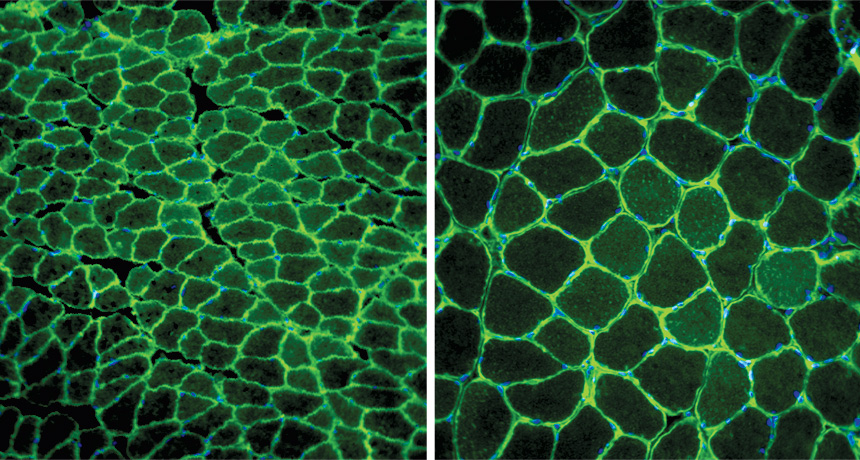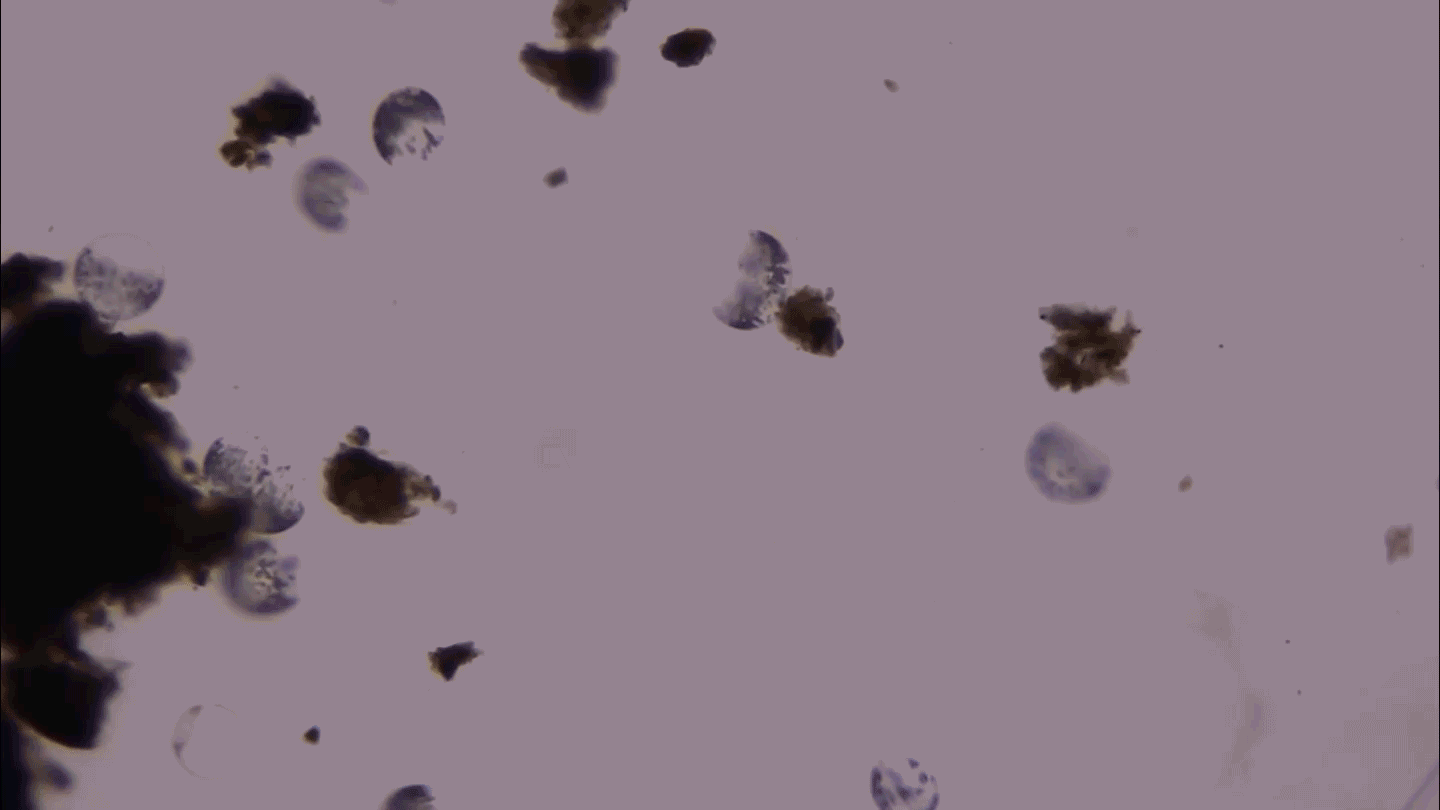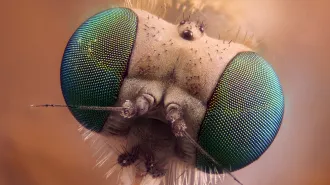Year in Review: Gift of steroids keeps on giving
Mouse muscles stay juiced long after doping ends

PUMPED UP Muscles in mice treated with steroids (right) grow bigger than muscles in undrugged mice (left). Steroids also increase the number of a muscle cell’s nuclei, which may help rebuild mass long after the steroids are gone.
J.C. Bruusgaard/Univ. of Oslo
24
Once a cheater, always a cheater, a mouse study found — at least when it comes to steroids.
The result, reported in October, strongly implies that anabolic steroids like testosterone give doping athletes a competitive advantage for years — perhaps even decades — after they stop taking the drugs.
If antidoping agencies were to revise steroid bans based on the results, those caught cheating might effectively face lifetime expulsion from competition.
In the experiment, female mice dosed with testosterone bulked up their muscles considerably. Along with increasing the size of muscle fibers, the steroid-treated animals boosted the number of nuclei in their muscle cells by up to 66 percent, Kristian Gundersen of the University of Oslo and colleagues reported October 28 in the Journal of Physiology (SN: 11/30/13, p. 7).
Nuclei, which skeletal muscle cells naturally possess multiple copies of, store the bulk of a cell’s genetic information.
More nuclei make it possible to build more of the proteins that give muscle fibers their strength.
When the drugs were stopped, steroid-pumped mouse muscles shrank back to normal size. But they didn’t lose the extra nuclei, Gundersen’s team found. Three months later (which translates to about a decade of human life span) the muscle fibers were still hanging on to their ill-gotten nuclei.
And the former dopers’ muscles bulked up 31 percent with six days of exercise. The same regimen added about 6 percent of muscle mass in mice that never got steroids.
There is currently no way to safely and ethically conduct a comparable study in people. But human and mouse muscles probably react similarly to steroids.
“The implication,” says Lawrence Schwartz, a cell biologist at the University of Massachusetts Amherst, “is once you have these nuclei, you never lose them.”







